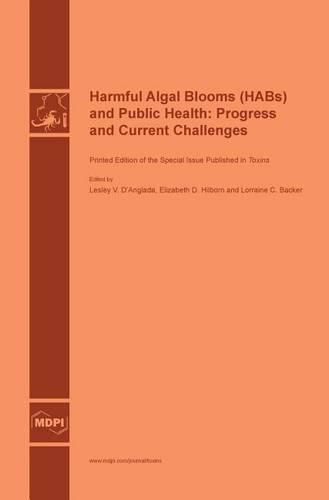Readings Newsletter
Become a Readings Member to make your shopping experience even easier.
Sign in or sign up for free!
You’re not far away from qualifying for FREE standard shipping within Australia
You’ve qualified for FREE standard shipping within Australia
The cart is loading…






This title is printed to order. This book may have been self-published. If so, we cannot guarantee the quality of the content. In the main most books will have gone through the editing process however some may not. We therefore suggest that you be aware of this before ordering this book. If in doubt check either the author or publisher’s details as we are unable to accept any returns unless they are faulty. Please contact us if you have any questions.
Over the past decade, coastal and freshwater systems in the U.S. and worldwide have experienced an apparent increase in the frequency and geographic distribution of harmful algal blooms (HABs). These blooms can adversely affect both public health and ecosystem health. Toxin-producing HABs can accumulate in drinking and recreational waters and in foods of aquatic origin such as fish and seafood. Human and animal health risks include exposure to the toxins through eating contaminated food or drinking or swimming in contaminated water. Because of these potential public health risks, several countries and U.S. states have developed monitoring programs and guidelines for drinking and recreational water quality to protect public health. This special issue will present research papers and reviews on various aspects of public health and environmental responses to harmful algal blooms. The subthemes considered include:
HAB monitoring for public health protection and response
Public health surveillance for HAB-related exposures and illnesses
Health risks from exposure to contaminated fish and shellfish, drinking and recreational water
Remediation and treatment technologies
Challenges and successes of HAB-related public health education campaigns and programs
HAB risk management
$9.00 standard shipping within Australia
FREE standard shipping within Australia for orders over $100.00
Express & International shipping calculated at checkout
This title is printed to order. This book may have been self-published. If so, we cannot guarantee the quality of the content. In the main most books will have gone through the editing process however some may not. We therefore suggest that you be aware of this before ordering this book. If in doubt check either the author or publisher’s details as we are unable to accept any returns unless they are faulty. Please contact us if you have any questions.
Over the past decade, coastal and freshwater systems in the U.S. and worldwide have experienced an apparent increase in the frequency and geographic distribution of harmful algal blooms (HABs). These blooms can adversely affect both public health and ecosystem health. Toxin-producing HABs can accumulate in drinking and recreational waters and in foods of aquatic origin such as fish and seafood. Human and animal health risks include exposure to the toxins through eating contaminated food or drinking or swimming in contaminated water. Because of these potential public health risks, several countries and U.S. states have developed monitoring programs and guidelines for drinking and recreational water quality to protect public health. This special issue will present research papers and reviews on various aspects of public health and environmental responses to harmful algal blooms. The subthemes considered include:
HAB monitoring for public health protection and response
Public health surveillance for HAB-related exposures and illnesses
Health risks from exposure to contaminated fish and shellfish, drinking and recreational water
Remediation and treatment technologies
Challenges and successes of HAB-related public health education campaigns and programs
HAB risk management